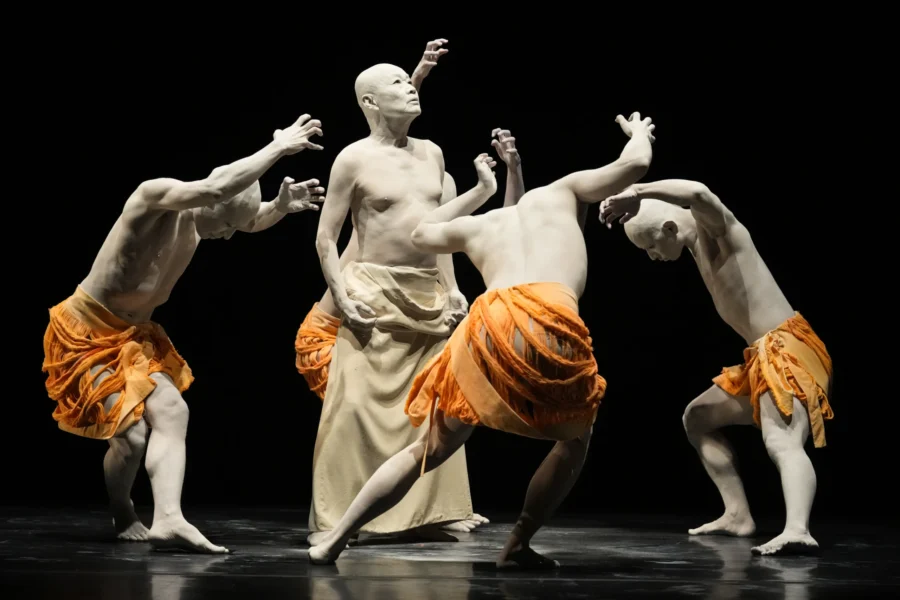The dance industry has been significantly transformed by the digital era, making a strong online presence essential for dancers to showcase their talent globally and foster collaborations. This digital shift allows dancers greater autonomy in presenting their artistic endeavors. A well-crafted content strategy is crucial not just for displaying skills, but for conveying emotion and building a deeper connection with the audience. Content serves as a powerful tool for storytelling, preserving cultural expression, and fostering creativity. The goal is to build a cohesive narrative around one’s art that goes beyond technical execution and establishes an emotional link with the viewer.
The Benefits and Challenges of an Online Presence
A strategic online presence offers numerous advantages, including increased visibility, access to new audiences, and directing traffic to personal websites. Dance content creation also builds a strong community among dancers, choreographers, and enthusiasts, fostering collaboration, stimulating creativity, and opening new avenues for networking and professional growth.
However, the digital landscape presents challenges. While it expands possibilities, it also creates pressure to constantly generate new content, gain followers, and strategically brand oneself. Dancers must maintain a consistent online presence, handle criticism, and continuously innovate. An effective content strategy must therefore outline not only what to publish but also how to manage these demands sustainably to prevent burnout and protect the artist’s well-being. Long-term practices are vital for professionalizing an artistic brand online, not just ephemeral successes.
Beyond performance, an online presence should highlight the dancer’s human element. Audiences seek not only flawless technique but also to understand the personality behind the art. Content strategies should balance polished presentations with authentic, personal insights. By sharing their individuality and stories beyond the stage, dancers can build deeper rapport and an engaged community around their artistic brand. The brand encompasses not just the art, but the artist who brings it to life.

Effective Content Formats for Dancers
Dancers have a vast array of content they can share online, extending beyond traditional performances. Diversifying content formats is key to attracting a broad audience and encouraging deeper interaction.
Visual Excellence: Reels and Performance Videos
The digital environment favors visually engaging and easily consumable content. Instagram Reels and YouTube Shorts are ideal for showcasing dance skills and creativity concisely. These short videos are perfect for captivating dance clips, quick tutorials, or participating in viral trends, leveraging immediate visual impact to quickly capture attention and often achieve viral reach. They act as digital “calling cards,” introducing dancers to new audiences through algorithmic exposure.
For more detailed artistic work, YouTube is the platform of choice. Dancers can upload extended tutorials, class recaps, and professional performance videos, allowing for a thorough presentation of their art, deeper narrative development, and full demonstration of choreographic or technical complexity. Longer videos are crucial for establishing authority and providing substantial value, offering comprehensive insight into a dancer’s artistic vision and proficiency.
Knowledge Dissemination: Tutorials and Educational Content
Sharing specialized knowledge through tutorials is an effective way to engage audiences and establish expertise in a dance style or technique. This can include teaching new steps, techniques, or entire choreographies. Matt Steffanina, for example, built his YouTube channel by sharing dance choreography tutorials and performances. Such instructional content is valuable and can also lead to monetization through online courses or workshops, significantly fostering an engaged learning community.
Authentic Insights: Behind-the-Scenes and Personal Narratives
To build a deep connection, dancers must go beyond staged performances and offer authentic insights. Behind-the-scenes (BTS) content provides a raw look into a dancer’s daily life or a dance academy. Sharing moments from rehearsals, costume fittings, or warm-up rituals creates an emotional bond by revealing the hard work, dedication, and unexpected challenges before performances. This humanizes the artistic brand and makes the creative process tangible and relatable.
Vlogs detailing a dancer’s routine, training, nutrition, motivation, or personal anecdotes build a strong personal connection with the audience. Including bloopers and imperfections makes dancers more approachable and human, significantly boosting engagement. Personal content is vital for distinguishing oneself and cultivating a loyal community invested in both the art and the artist.
Content diversification is a key principle. A strategy focused solely on polished performance videos can lead to audience fatigue or limit reach. By integrating various content types, from tutorials to BTS footage, Q&As, and vlogs, dancers can cater to diverse interests within their target demographic. This enhances the appeal of the “artistic brand” and encourages deeper involvement that transcends passive consumption, fostering active identification with the dancer’s journey.
Authenticity over mere perfection is another crucial aspect. While high-quality visual content is essential for showcasing abilities, authenticity fosters genuine connection. A strategic balance between polished presentations and spontaneous moments is necessary. The core principle is that a dancer’s brand includes not only flawless performance but also the approachable, human artist. The content mix should deliberately include both high-production-value content and unpolished moments to build an authentic relationship and humanize the social media brand persona.
Interactive Formats: Q&A Sessions, Challenges, and Live Streams
Interaction is central to audience engagement. Q&A sessions on social media facilitate direct, personal exchange, building trust and establishing dancers as industry authorities by directly addressing follower inquiries. Organizing dance challenges or competitions encourages active audience participation and builds a strong sense of community. Collaborations with other dancers, choreographers, or influencers significantly expand reach by tapping into new audiences. Live streaming features on platforms like Instagram Live or Facebook Live enable real-time interaction for performances, impromptu Q&As, or exclusive rehearsal glimpses. The immediacy of live formats creates unique intimacy and exclusivity, further stimulating engagement.

Choosing the Right Platform
Selecting appropriate social media platforms is a strategic imperative that profoundly impacts a dancer’s content strategy. Each platform has distinct characteristics, target demographics, and use cases.
Instagram is a visually oriented platform ideal for photos and videos, including Stories and Reels. It also offers Shoppable Posts. With 2 billion monthly active users, it’s favored by product-based businesses, influencers, and coaches, with users often researching products there. Women aged 16 to 44 prefer Instagram. For dancers, Instagram is excellent for sharing high-quality visual content like short performance clips, choreography excerpts, aesthetic dance photos, and behind-the-scenes insights. Reels are particularly beneficial for trending dance challenges and quick, engaging content. It’s a powerful tool for personal brand cultivation and visual engagement with a broad audience.
TikTok
TikTok focuses on short mobile videos driven by audio and visual trends. With 1.6 billion monthly active users, it’s experienced rapid growth and is crucial for engaging Generation Z. Women aged 16 to 24 consider TikTok their second preferred social platform. For dancers, TikTok is quintessential for participating in and initiating viral dance challenges, presenting concise choreographies, and interacting with a younger, trend-oriented audience. Its emphasis on audio and visual trends allows dancers to exhibit creativity and quickly gain high visibility.
YouTube
YouTube is the leading platform for original video content, offering both long-form videos and Shorts. With 2.5 billion monthly active users, it’s the second most used platform globally. Its diverse demographic shows high engagement; viewers are twice as likely to purchase an item seen on the platform and four times as likely to use YouTube for brand information compared to other social networks. For dancers, YouTube is ideal for presenting artistry through extended performances, comprehensive tutorials, vlogs of their dance journey, or exhaustive behind-the-scenes content. It’s highly conducive to brand building, attracting students for online courses, or collaborating with artists, facilitating deep content engagement.
LinkedIn is a career-focused platform for professional networking, job seeking, and connecting with industry leaders. With over 1 billion members, including senior leaders and decision-makers, it’s a highly specialized platform for professionals. For dancers, LinkedIn is invaluable for seeking professional opportunities, collaborations, or sponsorships. It can be used to network with choreographers, dance companies, talent agents, and other industry professionals. It also serves as a venue to highlight professional achievements, teaching experience, and leadership roles, acting as a digital curriculum vitae.
No single platform can meet all a dancer’s needs. Holistic brand cultivation requires a complementary use of multiple platforms. Dancers should adopt a multi-platform strategy to leverage each platform’s unique strengths, catering to diverse facets of their “artistic brand,” from showcasing performances (Instagram, TikTok, YouTube) to professional networking (LinkedIn) and educational endeavors (YouTube). Effective strategies also include cross-promotion, directing audiences between platforms (e.g., using TikTok to drive traffic to YouTube tutorials). The target audience is a pivotal factor in platform selection. Demographic data for each platform highlight that the decision should be based not just on content type, but fundamentally on whom one intends to reach. For instance, TikTok is crucial for younger demographics, while LinkedIn or YouTube might be more effective for professional opportunities or older students. Defining the target audience is a prerequisite for successful platform selection.

Optimal Posting Frequencies
Consistent publication is paramount to sustain follower engagement and encourage platform algorithms to feature content. However, a delicate balance between “quality over quantity” must be maintained to mitigate social media burnout. Excessive posting, even of high-quality content, can overwhelm the audience and negatively impact engagement. The optimal posting frequency is highly contingent on the specific target audience, individual objectives, and content type. Analyzing metrics like engagement rates, reach, and follower growth is essential for strategy refinement. Platform-native analytics tools help understand audience activity, including locations and peak engagement times. This data-driven approach is crucial for continuous optimization.
For Instagram, feed posts (images, carousels, videos, Reels) are recommended 2-5 times per week, prioritizing quality over quantity. Nano accounts (0-10K followers) might post twice a week, while mid-accounts (100K-500K) might post five times a week. Stories can be posted 3-15 times per week, with more Story content being common. Reels for maximum reach are ideally posted daily (1-4 times), considering quality. Best times for Reels are generally Monday-Thursday: 8-12 AM; Friday: 11 AM, 2 PM, 4 PM; Saturday: 9 AM, 10 AM, 5 PM; Sunday: 5 AM, 1 PM, 2 PM (EST). Weekends tend to have less engagement.
For TikTok, short videos should be posted 1-4 times per day, starting with 3-4 times per week. Consistency is crucial for the For You Page (FYP) algorithm, with no more than 4 posts per day to avoid overwhelming, and 1-2 hours between posts. Best times vary but are often mornings and evenings.
On YouTube, long videos are recommended once per week, focusing on existing subscribers, with planning and pre-scheduling being important. Shorts can be posted twice per week, ideal for reaching new audiences and directing them to the main channel.
For LinkedIn, posts (professional updates, articles, videos) are recommended 2-3 times per week, consistently. This is less frequent than other platforms, but high quality and relevance are crucial, with a focus on professional networking and career development.
Tools for Content Planning, Creation, and Publication
Effective management of a social media content strategy requires appropriate tools to streamline the process from ideation to publication, enhancing efficiency.
Design and Editing
Canva is a versatile tool for visual conceptualization of graphics, banners, and videos, often integrated into social media schedulers. It helps dancers create a consistent visual brand identity reflecting their aesthetic and professionalism. Even with a focus on movement, compelling graphics are essential for announcing courses, sharing inspirational quotes, or overall brand cultivation, ensuring a professional and coherent online presence.
Planning and Automation
The high volume of content recommended for platforms like TikTok and Instagram can be overwhelming. Social media schedulers such as Later, Post Planner, ContentStudio, Tailwind, SocialPilot, and Sendible are crucial for efficient content management. These tools facilitate pre-scheduling posts and maintaining a consistent publication calendar, saving valuable time. This automation allows dancers to dedicate more energy to their core competencies, dancing and choreographing, and direct audience interaction, shifting focus from mechanical tasks to content quality and authenticity, aligning with the “quality over quantity” paradigm and alleviating constant production pressure.
Examples of tools and their advantages include: Post Planner for cost-effectiveness, visual calendars, and “Evergreen Recycling”; ContentStudio as a comprehensive all-in-one platform with an intuitive interface, content calendar, and Smart Scheduling; Tailwind, specializing in Pinterest and Instagram, with scheduling, design, analytics, and “Tailwind Communities” for content sharing; SocialPilot, a robust platform offering advanced bulk scheduling and an integrated image editor ; and Sendible, a centralized solution integrating with Canva, suggesting optimal posting times, and enabling simultaneous scheduling of hundreds of posts. SocialBee and Pallyy are also recommended for scheduling, offering design tool integrations and visual content management.
Analysis and Optimization
Without data analytics, even the best content strategy remains unguided. Using platform-native analytics tools like Instagram Insights, YouTube Analytics, and TikTok Analytics is paramount for tracking performance, monitoring engagement, and continuously optimizing the strategy. Key metrics to monitor include follower growth, engagement rate, and content performance. Analytics tools transform content creation from an intuitive artistic endeavor into a strategic, data-driven process. Dancers can discern which styles, tutorial formats, or behind-the-scenes insights resonate most effectively, refining their work and content presentation to maximize artistic integrity and audience connection. This creates a continuous improvement cycle where the “artistic brand” is dynamically shaped through audience interaction.

Common Pitfalls and Best Practices
Cultivating a successful online presence as a dancer requires understanding effective strategies and being aware of potential impediments, along with applying proven practices.
Errors to Avoid
Common errors include disseminating substandard content, insufficient audience interaction, and lacking a distinct brand identity. Blurry, poorly lit, or unprofessionally edited content can convey negligence and deter audiences. Actively engaging with the community is crucial; a lack of responses to comments or messages can make followers feel disregarded, diminishing engagement. An excessive focus on likes and follower counts at the expense of genuine connections is another critical error. While large figures are appealing, successful dance influencer Matt Steffanina emphasizes that “empty numbers” are less rewarding than positive impact on a smaller group and authentic relationships. For tangible industry engagements like bookings or castings, likes and followers are often less significant than intrinsic content quality and authentic presence. The platform serves as a “curriculum vitae” where work caliber is paramount, underscoring the intrinsic value of substance and genuine artistry.
Proven Practices for Success
To avoid pitfalls and optimize success, dancers should:
- Quality over Quantity: Prioritize high-quality visual content and videos by investing in superior camera equipment, adequate lighting, and clear audio. Professional editing and subtitles enhance appeal and accessibility.
- Authenticity and Personality: Exhibit individuality and provide behind-the-scenes glimpses to cultivate deeper connections, including rehearsal footage, choreographic inspirations, or daily life insights. Sharing bloopers and imperfections humanizes the brand and makes it more relatable.
- Interaction and Engagement: Respond promptly and thoughtfully to comments and direct messages, solicit feedback, and strategically use relevant hashtags for discoverability.
- Collaborations: Actively engage in collaborations with other dancers, choreographers, or influencers to expand reach, access new audiences, and generate new artistic and professional opportunities.
- Continuous Analysis and Adaptation: Regularly monitor performance metrics and adjust strategies based on insights gleaned from data analysis tools to understand optimal content and areas for optimization.
- Profile Optimization: Maintain a clear, consistent profile picture and a concise biography with relevant keywords highlighting expertise, as the profile is often the initial point of contact.
For dancers, digital reputation is the new audition, with social media serving as a dynamic, public portfolio. Every piece of content contributes to professional standing, curating an image that appeals to prospective employers, collaborators, and agents. This requires strategic self-marketing that is professional, consistent, and versatile, similar to a traditional curriculum vitae.
Dancers’ online success is increasingly collaborative. Collaborations are not just for cross-promotion but foster a supportive ecosystem within the dance community. This extends to user-generated content, where the audience becomes an integral part of content creation, strengthening community bonds. A dancer’s artistic brand thrives not only on individual talent but also on the ability to connect, collaborate, and co-create within a broader network.
Dancing in the Digital Age
The digital landscape has transformed the dance world, offering unparalleled opportunities for dancers to share their art and advance careers. A strategically grounded content presence is now essential for maximizing visibility, engagement, and career prospects. Success on social media relies on a carefully curated blend of content: dynamic performance videos, viral short clips, didactic tutorials, and authentic behind-the-scenes insights with personal narratives that forge deeper connections. This content must be tailored to each platform’s strengths and target demographic. Deliberate platform selection, Instagram for visuals, TikTok for viral reach, YouTube for in-depth content, LinkedIn for professional networking, is paramount. A multi-platform strategy leveraging each platform’s unique advantages, complemented by cross-promotion, facilitates holistic brand cultivation. Consistency in publication and an unwavering emphasis on quality over quantity are the foundation of a sustainable strategy.
Data-driven analysis of posting frequencies and content performance is indispensable for continuous optimization and aligning with audience requirements. Modern tools for content planning, creation, and analysis significantly simplify management, allowing dancers to focus on their core artistic pursuits. It is equally crucial to avoid common errors like substandard content or insufficient interaction, and to embrace authenticity, collaboration, and diligent digital reputation management. A dancer’s digital presence is now more than ever a dynamic curriculum vitae and an ongoing audition. The digital stage offers boundless opportunities to sculpt one’s artistic brand, cultivate a global community, and transform a passion for dance into a flourishing online presence. Through strategic foresight, sustained engagement, and adaptability, dancers can achieve their goals and sustainably shape their careers in the digital age.









